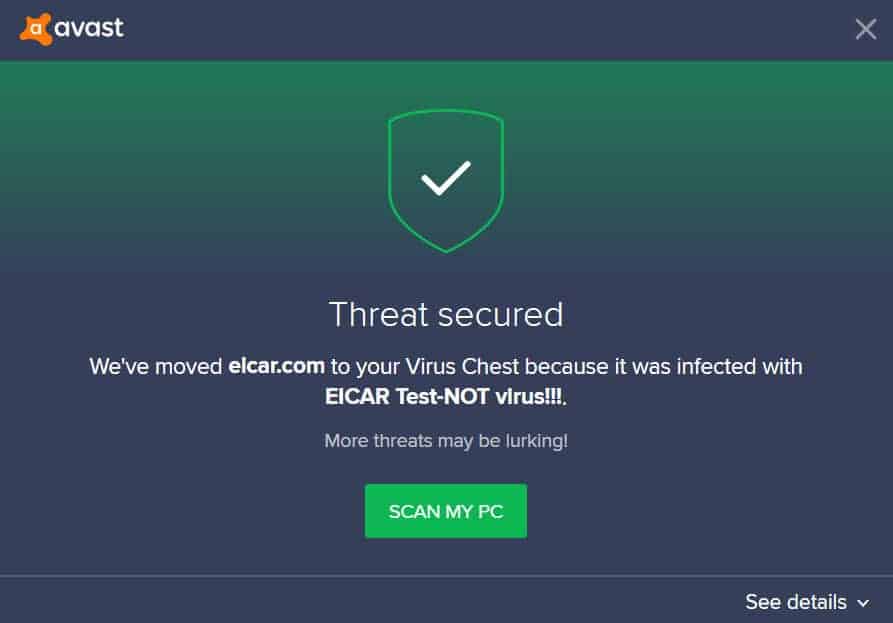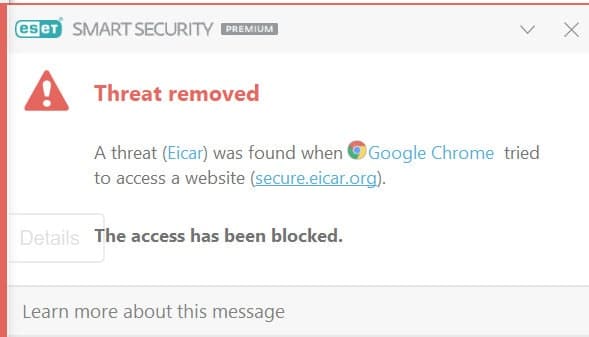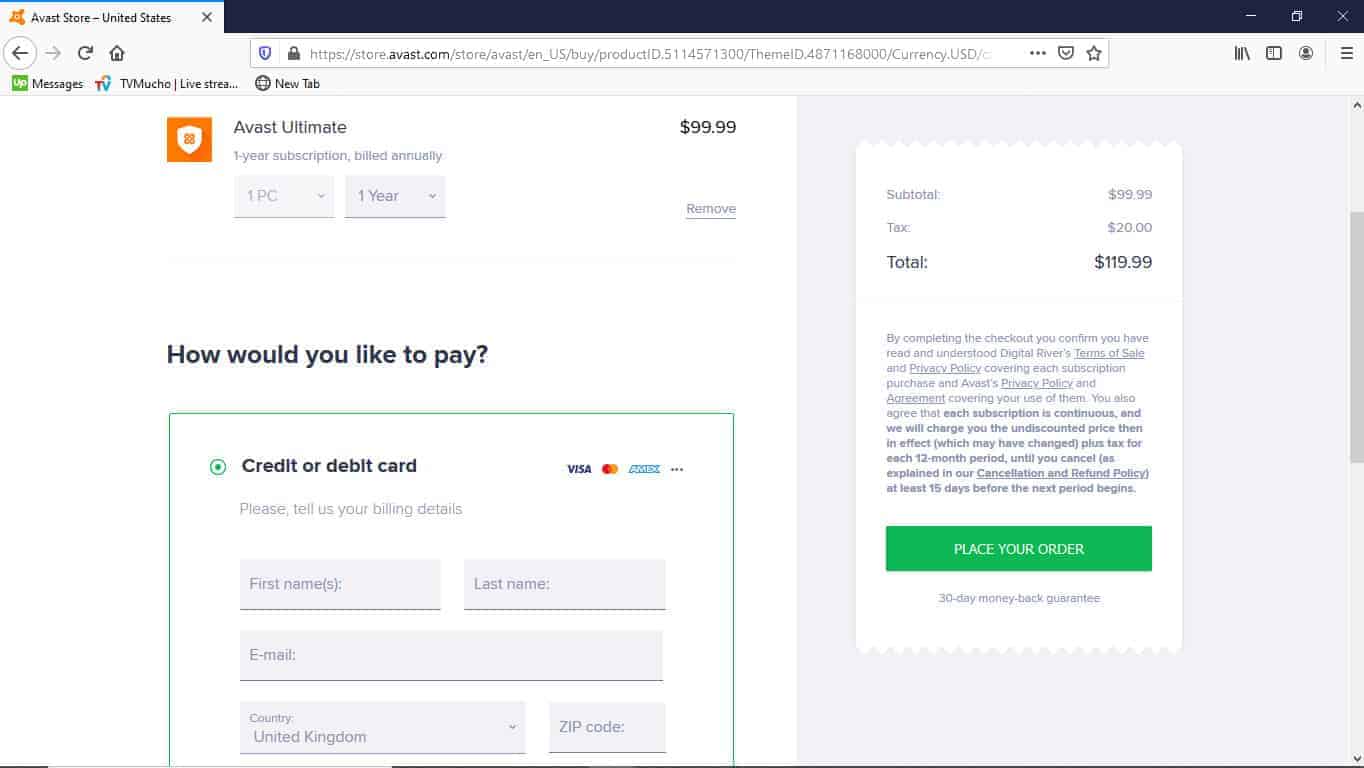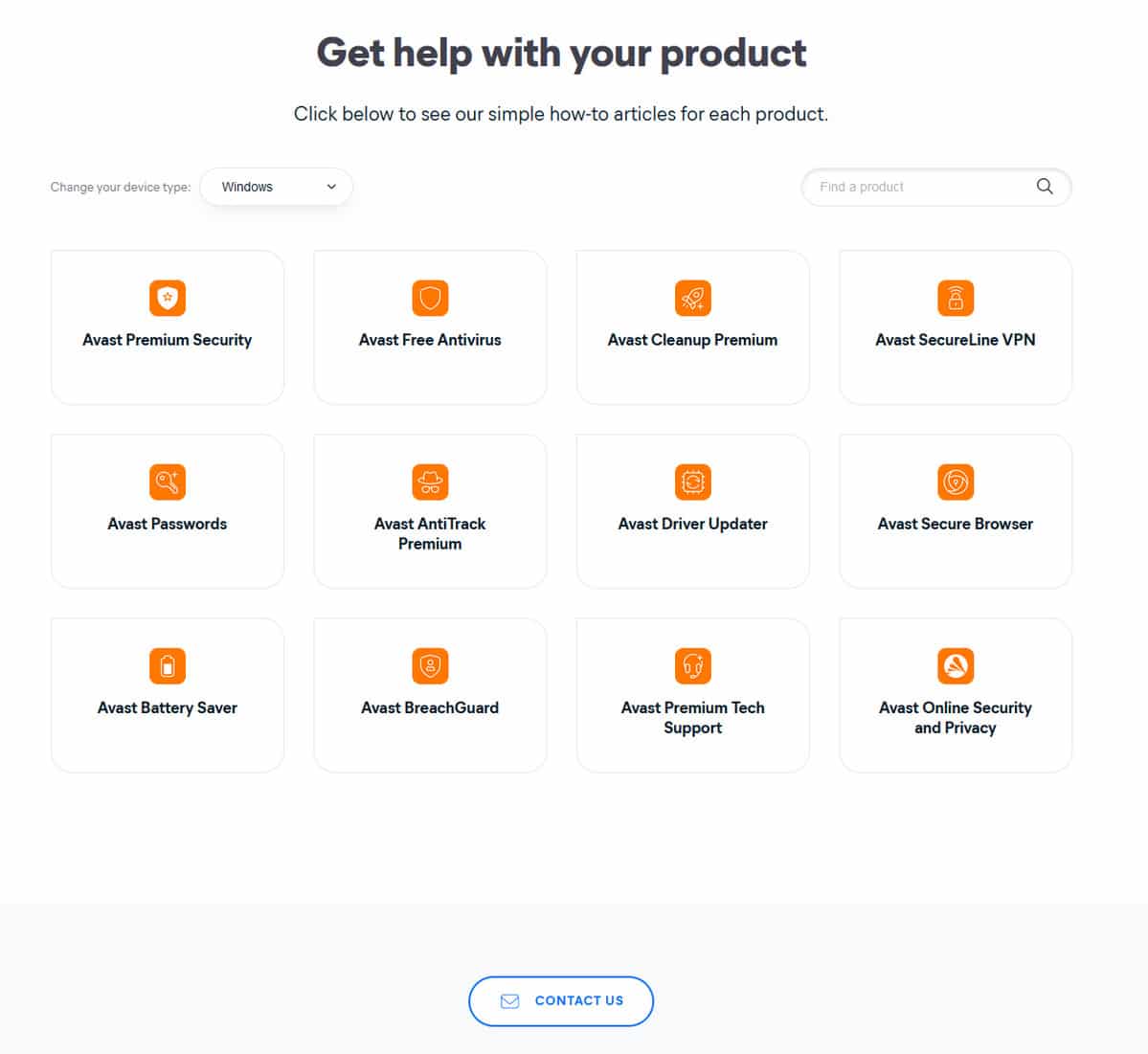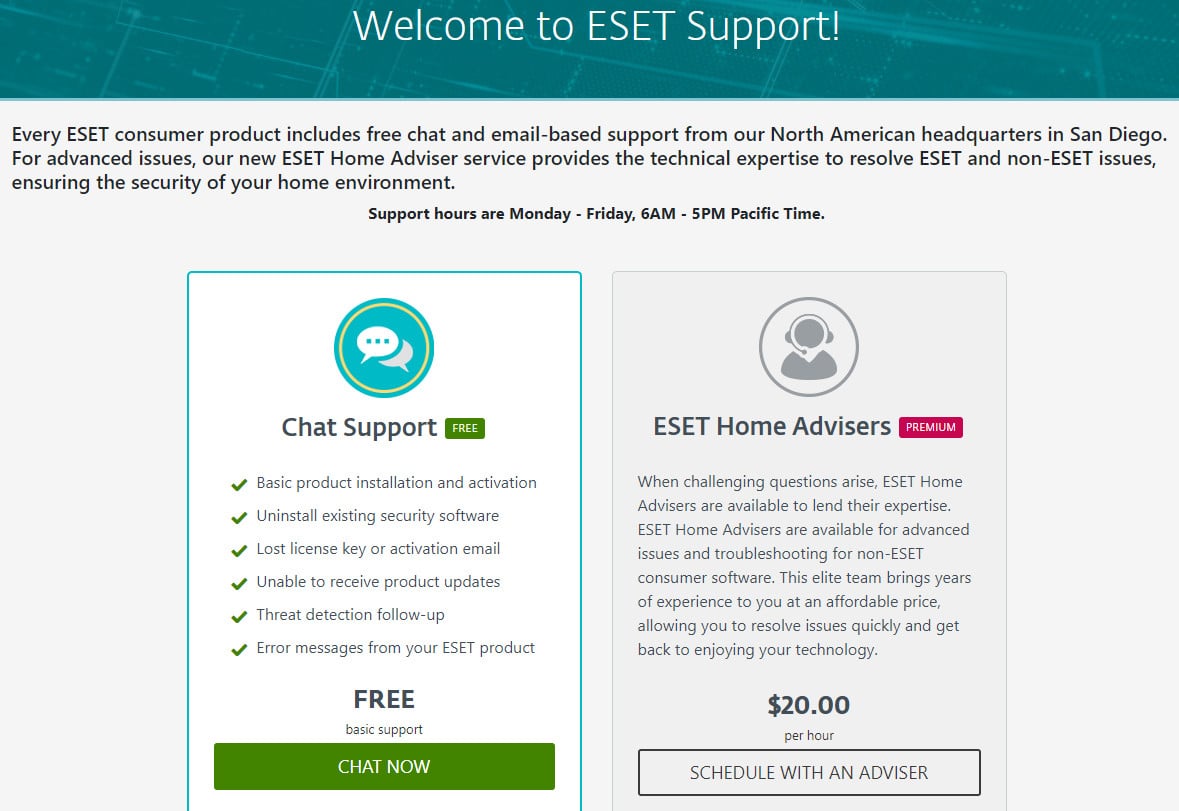When you’re eyeing both ESET and Avast as your go-to antivirus solutions, it’s like standing at a tech crossroads. Both giants in cybersecurity offer a slew of features that can seem pretty identical unless you scratch beneath the surface. In this head-to-head review, we’re doing the scratching for you. I’ll dissect both brands based on independent test scores and feature sets, focusing on their flagship products: ESET Smart Security Premium and Avast Premium Security.
Here’s the gist: ESET wins my vote. It boasts a user-friendly interface, exceptional scores in independent antivirus tests, and more bang for your buck in the top-tier package.
Summary: ESET vs Avast
ESET
- Performed well in antivirus lab testing
- Good scores in offline detection
- 0 false positives in latest independent tests
- Webcam control
- Anti-theft feature
Avast
- Excellent scores in online malware detection tests
- Ransomware protection
- Simple installation process
- File shredder
- VPN
| No value | ESET | Avast |
| Website | eset.com | avast.com | Antivirus and Antispyware | Firewall | Password Manager | Ransomware protection | Parental controls | Webcam protection | PC Cloud Backup | VPN | Banking and Payment Protection | Network Attack Protection | Secure data encryption | Automatically update apps | File Shredder | Performance Optimization |
|---|---|---|
| Best deal (per month) | $4.99 50% off all ESET Home Security products! | $2.10 Holiday SALE! Save up to 65% |
With both ESET and Avast scoring well in lab tests it’s hard to separate the two on tests alone. However, with Avast recently being reported to be selling user data I feel much happier trusting ESET to guard my privacy and security online.
BEST DEAL: Save 20 percent on ESET here
Background
Avast:
Headquartered in Prague, Czech Republic, Avast is a multinational cybersecurity powerhouse. Beyond antivirus, the company is deep into AI and machine learning tech. But let’s not gloss over the elephant in the room: Avast came under fire for collecting and selling user data through a subsidiary, which raises eyebrows for a product meant to ensure your online privacy. Avast acquired AVG in 2016, and the two have been pooling resources to fortify their cybersecurity offerings. As of my last update, Norton is in the process of acquiring Avast, hinting at a future security suite that could be a game-changer.
ESET:
Calling Bratislava, Slovakia it’s home, ESET has been in the cybersecurity game since ’92 and has a trophy room of awards to prove it. The brand offers a diverse portfolio of antivirus and security programs, all of which have garnered applause from industry experts.
ESET vs Avast pricing
At the time of writing ESET offers a free basic version of its software plus three paid product tiers:
| No value | ESET NOD32 Antivirus | ESET Internet Security | ESET Smart Security Premium | ESET Mobile Security for Android | ESET Cyber Security | ESET Cyber Security Pro |
| Website | eset.com | eset.com | est.com | eset.com | eset.com | eset.com | One year price | $39.99 | $49.99 | $59.99 | $14.99 | $39.99 | $49.99 | Renewal price | $39.99 | $49.99 | $59.99 | $14.99 | $39.99 | $49.99 |
|---|---|---|---|---|---|---|
| Best deal (per month) | $3.33 Save 25% on a 2-year subscription! | $4.16 SAVE 24% on 2 year plans | $4.99 Save 25% with a 2 year subscription | $1.24 ONLY $44.99 for a 2 year plan | $3.33 SAVE 25% on 2 year plans | $4.16 SAVE 25% on 2 year plans |
| No value | Avast One Free Antivirus | Avast One | Avast Premium Security | Avast One Individual | Avast One Family |
| Website | avast.com | avast.com | avast.com | avast.com | avast.com | One year price | Free | $39.99 | $50.28 | $50.28 | $69.48 | Renewal price | N/A | $69.99 | $75.99 | $99.99 | $139.99 |
|---|---|---|---|---|---|
| Best deal (per month) | Free FREE download | $2.80 GET 66% off 2 year plans | $2.10 GET 66% off 2 year plans | $2.80 GET 66% off 2 year plans | $3.95 GET 66% OFF 2 YEAR PLANS |
As the tables above show, even the cheapest version of Avast is more expensive than the top tier product in the ESET line up.
Avast offers a 30-day free trial on many of its products, including Avast Premium security. ESET offers a 30-day money-back guarantee if you are not satisfied with the product.
I have taken advantage of both these offers in the past when reviewing Avast and ESET products, and I can confirm that both companies honor their money-back policies should you ask them to cancel the subscription within the stated time period.
It’s worth noting that Avast’s multi-device option costs $89.99 (GBP £66.27) for up to 10 devices. This is a good option for busy households with many devices. By comparison, the mid-range offer from ESET can cover five devices for the same price ($89.99) but costs $139.99 (GBP £102.75) to cover 10 devices.
ESET and Avast are compatible with Windows PCs, Android and iOS devices, and macOS.
Effectiveness against malware
To test the effectiveness of both ESET and Avast antivirus products against malware, I installed both products on my own PC and ran malware tests. The first test I performed was a real-time test that pro-actively looks for malware attacks and threats in the background while you are using the PC without waiting for a scan to be run manually or for the scheduled scan time.
I turned off real-time protection for the second test and used multiple sample malware test files from EICAR (The European Institute for Computer Antivirus Research) on the machine. These test files simulate viruses in different forms and from both secure and insecure connections to see how antiviruses react.
I also tested both the quick scan option, if available, and the full scan to see what differences there were. Finally, in addition to my own research, I looked at the test results from the leading independent antivirus test lab AV-Comparatives. Here are the results.
The table below shows the results of both antivirus products when tested with four different Eicar samples, plus three tested live samples containing adware and trojans.
| No value | ESET | Avast |
| Website | eset.com | avast.com | Eicar Sample 1 | Blocked | Allowed | Eicar Sample 2 | Blocked | Allowed | Eicar Sample 3 | Blocked | Allowed | Eicar Sample 4 | Blocked | Allowed | Live Sample 1 (Adware) | Blocked | Blocked | Live Sample 2 (Trojan) | Blocked | Blocked | Live Sample 3 (Trojan) | Blocked | Blocked |
|---|---|---|
| Best deal (per month) | $4.99 50% off all ESET Home Security products! | $2.10 Holiday SALE! Save up to 65% |
ESET Successfully detected and deleted all files in real-time and blocked all four Eicar samples.
Avast allowed the Eicar samples when downloaded over HTTPS, but blocked them on HTTP. Avast also deleted all live samples.
ESET does not have a quick scan option, which would not scan the full system but just look at the most common areas targeted by malware on a device, so this could not be tested.
I was able to test the quick scan feature with Avast, called Smart Scan and it found no threats, compared to the full scan which found all threats (EICAR and live samples).
AV-Comparatives’ latest round of its Real-World Protection Test took place in October 2021. Both companies’ antivirus software scored well in the testing with Avast performing better in online detection and protection rates, while ESET scored better for offline protection. ESET recorded zero false positives compared to two false positives recorded by Avast. False positives occur when the antivirus incorrectly flags a non-malware file or process as malware.
The total online protection rates make Avast one of the top performers in the October 2021 round of testing, while ESET ranked middle compared to other leading antivirus brands. ESET was compromised 1.1 percent of the time while Avast was compromised 0.1 percent of the time.
The false positives test shows ESET as the joint top performer of all antivirus software tested in October 2021, with Avast close behind.
False positives are an important consideration when choosing an antivirus software because false results cause alarm and hinder how well users can use their machines. If apps or other files are wrongly labeled as malware it can affect productivity.
Impact on PC performance
A major factor most users (including me) care about is the impact the antivirus software has on PC speed and performance. To compare the impact of both ESET and Avast, I looked at some data while the software was running on my PC.
| No value | ESET | Avast |
| Website | eset.com | avast.com | Full Scan Time (minutes) | 68 | 60 | Number of scanned objects | 930,000 | 1870000 | Full Scan CPU Utilization % | 68 | 72 | Full Scan Memory Utilization % | 70 | 300 | Full Scan Disk Utilization (seconds) | 510 | 19 | Control CPU Utliization % (no scan) | 32 | 72 | Control Memory Utilization % (no scan) | 63 | 28 | Control Disk Utilization (seconds) (no scan) | 17 | 32 | Quick Scan Time (seconds) | N/A | 64 | Quick Scan CPU Utilization % | N/A | 42 | Quick Scan Memory Utilization % | N/A | 73 | Quick Scan Disk Utilization (seconds) | N/A | 5801 |
|---|---|---|
| Best deal (per month) | $4.99 50% off all ESET Home Security products! | $2.10 Holiday SALE! Save up to 65% |
The impact on PC resources without running a scan is identical for CPU utilization for both programs, with Avast using more control memory and control disk utilization.
When it comes to impact when running a full scan ESET utilizes more CPU than Avast with 68 percent to 42 percent.
Memory utilization is closer with just a 3 percent difference between the two programs. ESET scores 70 percent while Avast uses 73 percent. ESET takes slightly longer than Avast to complete a full scan, completing the task in 68 minutes compared to 60 minutes for Avast.
| Test Type | Quick Scan CPU Utilization % | Quick Scan Memory Utilization % | Quick Scan Disk Utilization % | Quick Scan Time (seconds) |
| ESET | N/A | N/A | N/A | N/A |
| Avast | 90 | 72 | 300 | 146 |
The AV-Comparatives Performance Test measures the impact of the antivirus on speed and PC performance during a number of tasks. This includes:
- File copying
- Archiving / unarchiving
- Installing / uninstalling applications
- Launching applications
- Downloading files
- Browsing websites
The results of the test conducted in October 2021 show both ESET and Avast scored top marks in five of the six categories ranked as “very fast”. Only the first run of file copying for ESET and first run of launching applications for Avast failed to score top marks, but even these were ranked as fast.
When it comes to performance, my tests and the independent lab results show there is no clear winner between the two antivirus products. I also found similar results with my own tests, and using the PC to carry out tasks while a full scan was in progress. Both programs felt light on system impact. I was able to perform a number of tasks including browsing the web and launching apps while an antivirus scan was running in the background.
ESET vs Avast features
Aside from the antivirus engine itself, both companies bundle a number of extra features with the top tier software packages to enhance the security of your PC.
- Antivirus and Antispyware
- Anti-Phishing
- Gamer Mode
- Exploit Blocker
- UEFI Scanner
- Cloud-Powered Scanning
- Small System Footprint
- Script-Based Attack Protection
- Ransomware Shield
- Free Support in Local Language
- License Manager
- Banking and Payment Protection
- Personal Firewall
- Antispam
- Network Attack Protection
- Botnet Protection
- Parental Control
- Webcam Protection
- Connected Home Monitor
- Anti-Theft (Windows only feature)
- Password Manager
- Secure Data
- Block viruses and other malware
- Scan for wi-fi security weaknesses
- Secure your passwords
- Avoid fake sites for safer shopping
- Safely run suspicious apps in Sandbox
- Lock out hackers with an advanced firewall
- Block annoying spam and phishing emails (separate download required)
- Get an extra layer of ransomware security
- Stop webcam spying
- Permanently shred sensitive files
- Automatically update apps
- Avast Cleanup Premium
- Avast SecureLine VPN
- Avast Passwords Premium
Many of the additional features can be found in both antivirus products including firewalls, password managers, and network security scanners, but there are also quite a few unique tools for each brand. It’s also worth mentioning that ESET offers more additional features than Avast. One other thing to note is that Avast requires you to download separate software to block spam and phishing emails, which is slightly annoying although it is free.
Which you find most useful depends on your personal needs. I will take a look at some of the standout benefits of each:
ESET
Gamer mode – ESET’s Gamer mode is a handy feature which can identify when other software programs are running in full-screen mode, suggesting that the PC is being used for gaming or watching a movie. In this mode ESET minimizes interruptions and maximizes PC performance.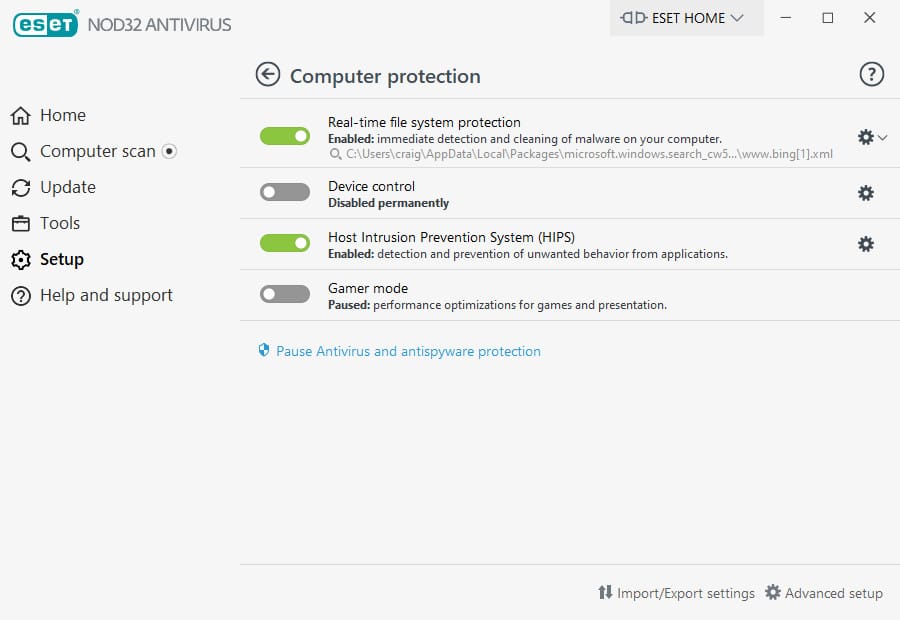
Anti-Theft (Windows) – This feature helps you track and locate your laptop in case it goes missing as a result of a loss or theft, but it is only currently available on Windows devices.
UEFI Scanner – Many antivirus products do not reach the motherboard’s UEFI, (Unified Extensible Firmware Interface), a program that manages the PC boot up process. ESET scores extra points here because it is designed to detect any changes to the UEFI and can warn the user and pause the boot up process.
Parental Control – ESET includes a parental control feature so you can monitor and manage access to the internet and restrict certain content from children. This saves extra expense buying standalone parental control. Avast does not include free parental control in its offering.
Avast
Scan for Wi-Fi security weaknesses – Find intruders and security weaknesses in your network such as a weak router password. This tool also checks both home and public wi-fi for strangers piggybacking on your network and fixes any issues.
Safely run suspicious apps in Sandbox – Sandbox any app to test if it’s safe before running it on your computer. This will contain any malicious apps before they wreak havoc on your PC.
Permanently shred sensitive files – Securely delete files to ensure that no one recovers them. This works by overwriting files with meaningless data multiple times before deleting them so they can’t be recovered.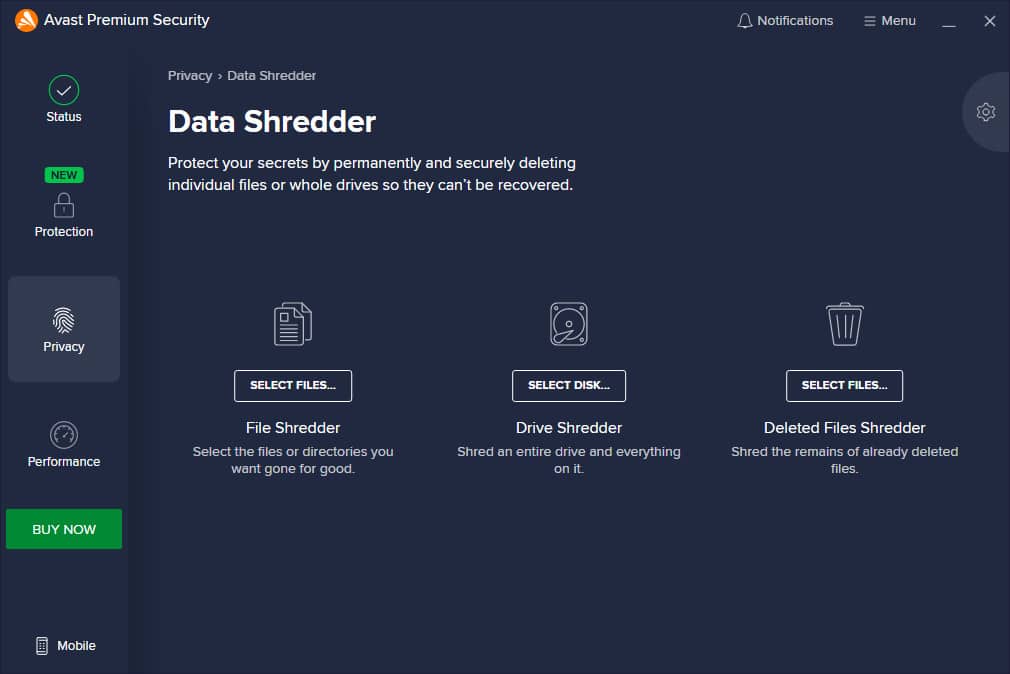
Automatically update apps – Reduces security risks by keeping your other apps up-to-date without any gaps in between that leave them vulnerable to hackers or other security threats.
Avast SecureLine VPN – A VPN offers good additional security tool to encrypt your internet connection for safe and private browsing.
Sign up & Installation
Signing up for Avast was straightforward, with a simple billing form asking for basic details. The installation file download took just a few minutes. Running the installation and performing a first scan took approximately 15 minutes, but the ability to minimize the scan window and continue working was a welcome feature.
ESET also requires minimal information during sign-up, including your name, address, and payment details. The Windows installer file was downloaded in under a minute, and the installation process was quick to start. However, an update was necessary to enable real-time protection after reaching the app interface. This update process took a noticeable amount of time (around 10 minutes), which I left running in the background.
How easy is the interface to use?
ESET has a fresh interface with a clear layout. The home screen features a banner that tells you the status of the system. A green banner lets you know everything is safe and secure, while if a scan should find issues a yellow bar will display alerting you to take a look. This status bar will turn red if the system is under attack.
The menu has a simple layout with main categories listed along the left side of the window making it easy to access the most important settings.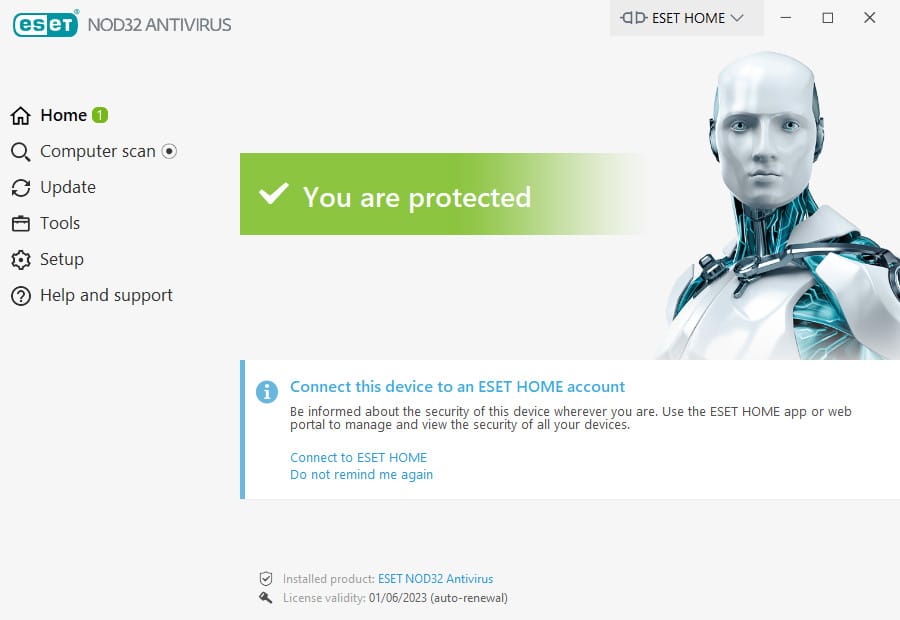
Avast uses a minimal design that looks really nice and clear. The main screen lets you run a smart scan for weak passwords, vulnerable software, networks, and browser add-ons, alongside a virus scan. 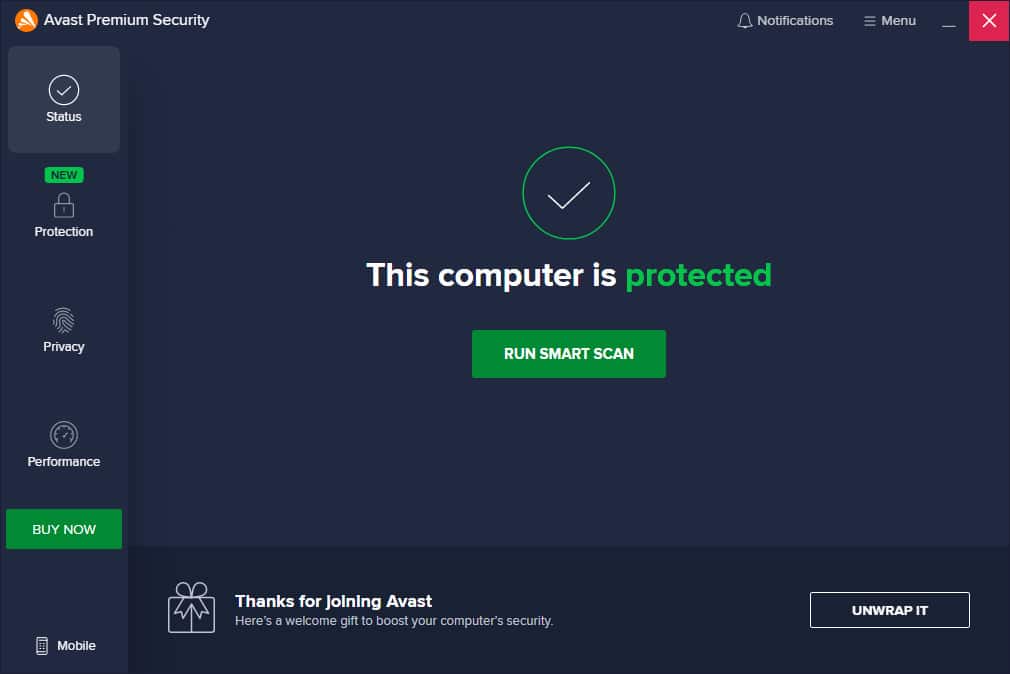
Other shortcuts marked with clear icons make it quick and easier to navigate to pages on Performance, Privacy, and Protection.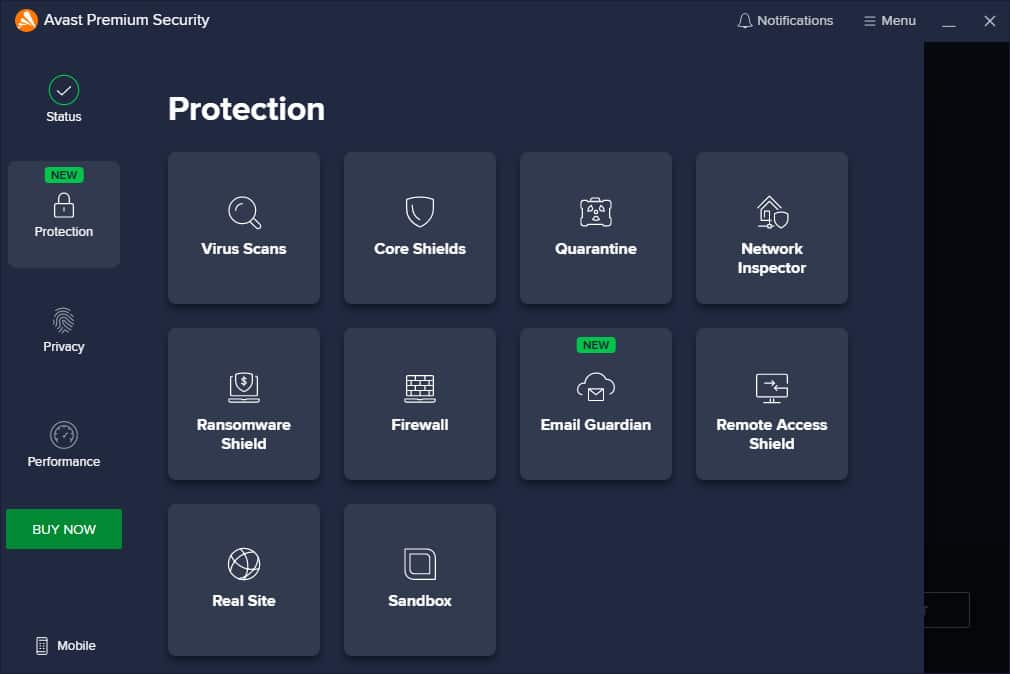
Customer Support
Avast offers Premium Tech Support via phone, giving you remote access to your PC for direct troubleshooting. However, this service isn’t included in your subscription and costs $79.99 (GBP £58.71) for a one-time fix to $199 (GBP £146.06) for unlimited support for a year. Additional resources include a FAQ section and an online academy for learning about cyber threats.
ESET provides a help section where you can find support documentation or request further help directly from customer support. Options include email support, live chat, a knowledge base, and user guides. They also offer a FAQ section and installation/setup assistance.
Overall, ESET offers a more diverse range of support options. Their live chat feature is a quick and convenient way to resolve issues without incurring additional charges.
ESET vs Avast – which wins?
Wrapping up the ESET vs Avast showdown, it’s a close call. Avast shines in online threat protection, but it stumbled in my tests by letting four Eicar samples slip through. On the other hand, ESET blocked everything, excelling in offline defense and reducing false alarms. However, Avast has been in hot water recently for selling user data.
Price-wise, ESET’s top package is almost $20 less than Avast’s, offering solid savings. But if you’re covering more than five devices, Avast could be more wallet-friendly.
Feature and support-wise, ESET takes the cake. With extras like parental controls, UEFI protection, and Anti-Theft for Windows PCs, ESET edges out as my top pick.
Antivirus testing – our methodology
At Comparitech, we use a scientific antivirus testing methodology that combines in-house tests with the results of leading antivirus testing laboratories. This method allows us to confidently review and recommend antivirus programs based on important real-world benchmarks. Below, are the important criteria we consider:
- How does the antivirus affect system resources during both quick and full scans?
- How long does the software take to run a full scan?
- How effective are the AV’s real-time scanning and malware removal tools?
- How good is the antivirus at detecting and removing a cross-section of exploits?
The tests performed in-house by myself and our review team and are designed to give readers a precise understanding of how an antivirus will perform when installed on their device. This gives you an idea of the program’s setup process, its ease of use, its design and interface, and how easy it is to use for protecting various devices.
We then leverage the data from various leading and respected antivirus testing laboratories, find out exactly how effective each antivirus is at identifying and dealing with highly malicious and prevalent malware samples, including some of the most recent exploits circulating in the wild.
To ensure the data we use is reliable, we stick to using results from highly trusted antivirus testing authorities:
By sticking to the most recent test results by these independent laboratories, we can provide consumers with unbiased information about each AV product’s ability to protect their devices against real-world threats.
FAQs about ESET and Avast
What's the difference between free and premium antivirus software?
Free antivirus software is great for basic protection, but if you really want to up your security game, premium antivirus software is the way to go! Premium software typically offers more features, such as automated updates and real-time threat scanning, to ensure maximum protection. So, if you’re looking for an extra layer of defense against all potential threats, premium software is definitely worth the investment!
What's the benefit of a VPN?
A VPN is like a cloak of invisibility for your online activity! It keeps you safe from hackers and snoops by encrypting your connection and hiding your IP address, so that no one can track your online work. With a VPN, you can browse the web anonymously – it’s like having a superpower for your internet security!
How does an antivirus detect malware?
Antivirus detects malware in a variety of ways. One common approach involves using a database of known malware signatures. As the antivirus scans a file, it will compare the contents against these signatures to look for matches that indicate malicious code. The antivirus may also use heuristics to identify suspicious behavior or unusual patterns within files. These techniques can be combined with additional measures like scanning for malicious code within network traffic or analyzing file activity to detect malware before it has a chance to do any damage.
Another approach is using machine learning algorithms that can identify potentially malicious code by monitoring the behavior of programs and files as they run. This approach allows antivirus software to stay updated and detect new malware threats that may not have been previously identified. Ultimately, the effectiveness of antivirus software depends on the ability to leverage a variety of detection techniques in order to protect against a wide range of malicious code.
Will antivirus software slow down my PC?
It really depends on the antivirus software you’re using. Many leading antivirus programs are designed to work in the background and won’t impact your system performance noticeably. However, some more high-end features, like real-time protection and cloud scanning, may require more processing power to operate correctly – though it won’t usually need too much horsepower.
Does an antivirus protect you from hackers?
An antivirus may help detect and block some malicious software, but it’s not enough to keep hackers at bay. That’s like using a fly swatter to fight off an army of zombies! For true protection against hackers, you need a VPN – it’s like a fortress for your online security.
Does Avast free antivirus stop ads?
Avast’s free antivirus offers multiple layers of protection against malicious threats and can also help prevent annoying ads from popping up. Avast Secure Browser is free and complements Avast’s free antivirus to block ads. The two work in unison to provide comprehensive real-time scanning technology and advanced features like browser cleanup. You can rest assured that your device is safe from malware, phishing attacks, and ads alike.
Can I use ESET or Avast antivirus on multiple devices?
ESET and Avast offer multi-device support with their premium plans, allowing you to protect multiple devices under a single subscription. This feature is handy for users who own several devices or families looking to secure all their devices with a unified solution.
When choosing a plan from ESET or Avast, check the specific details to determine the number of devices covered and the platforms supported. For example, ESET provides multi-device support for Windows, macOS, Android, and Linux devices, while Avast offers support for Windows, macOS, Android, and iOS devices.
Some plans may include more advanced features for specific platforms, such as parental controls, device tracking, or VPN services. Review the features offered for each platform to ensure you get the desired level of protection and functionality on all your devices.
Remember that managing multiple devices with a single subscription may require creating an account with the antivirus provider. This account will enable you to monitor the security status of all your devices, manage subscriptions, and access additional features or support.
See also:


